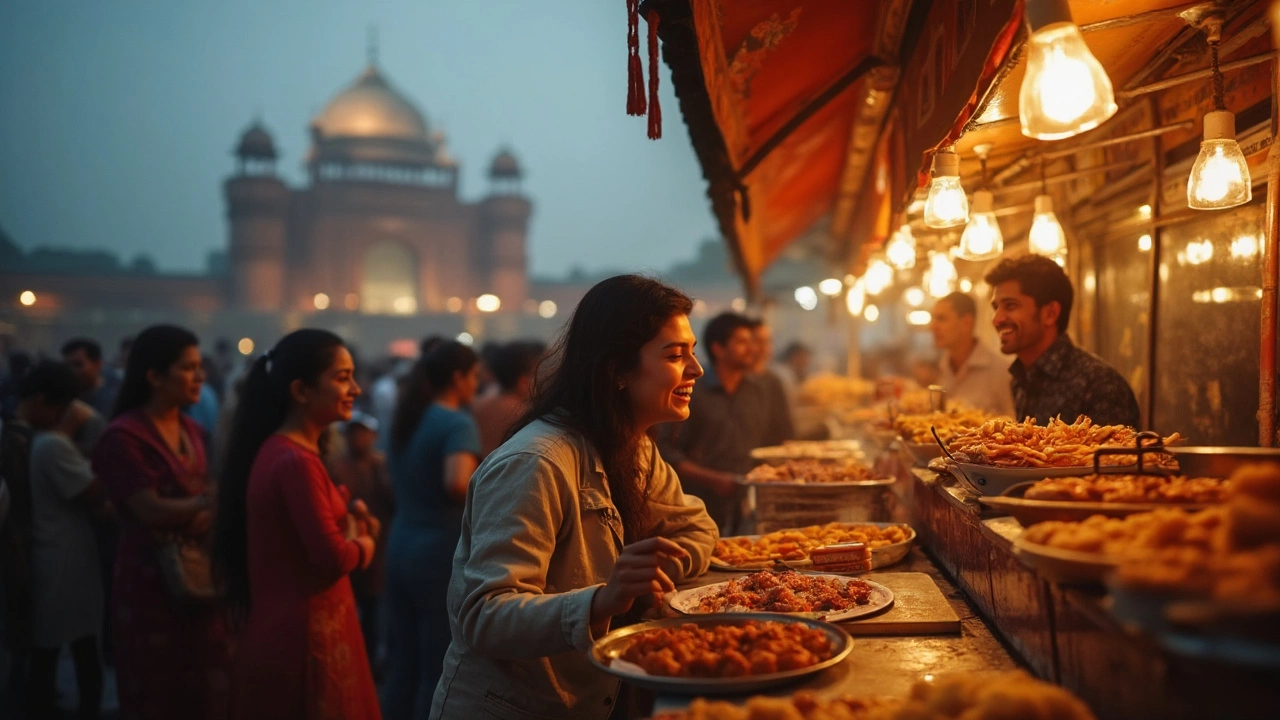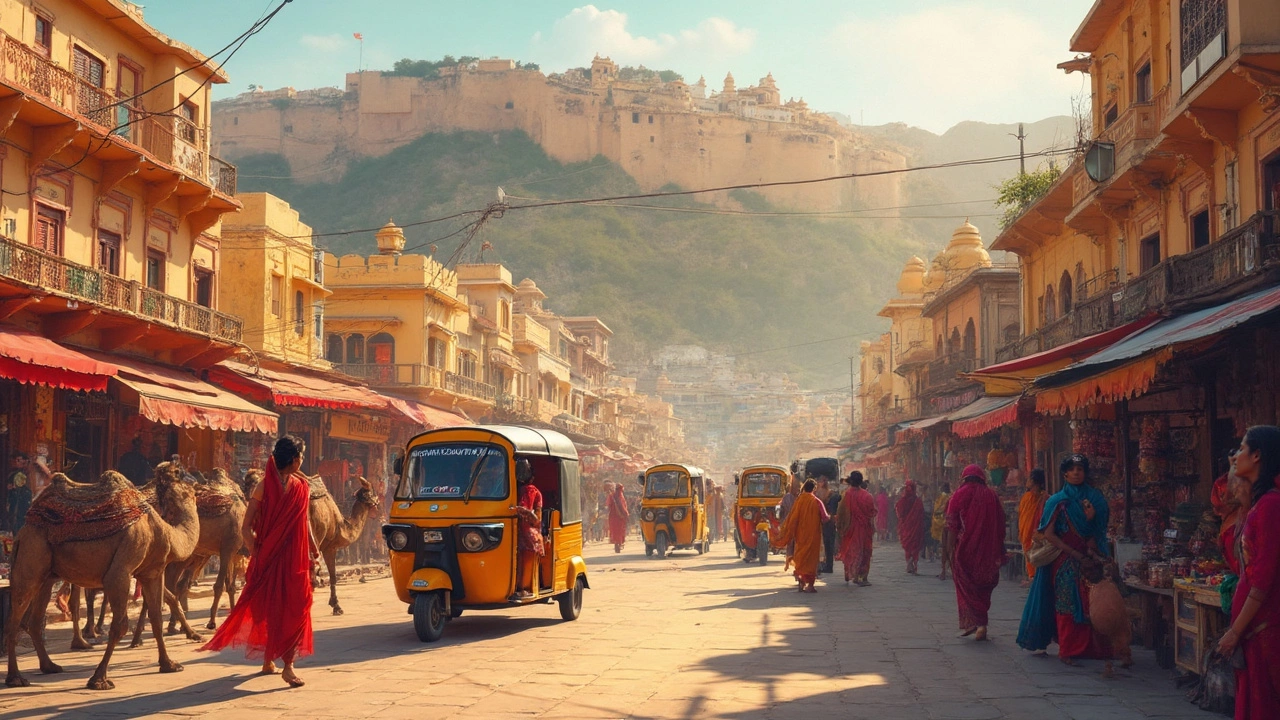So, you’re torn between Jaipur and Delhi for your big North India adventure? You’re not alone. These two cities couldn’t be more different, and your choice will totally shape your trip. Some folks swoon over the royal palaces and chill pace in Jaipur, while others can’t get enough of Delhi’s energy, street food, and wild blend of the old and the new.
Here’s the thing: picking “the better city” really depends on what you want. Are you a history nerd, a foodie, or someone who loves chaos and color? Maybe you just want the place that feels safer and easier to get around in. I’ll break down how these cities stack up, what makes each one awesome (or exhausting), and what kind of traveler might vibe with each one best. Because honestly, even Jasper (that’s my cat) would have a hard time choosing between them — and he’s surprisingly picky.
- City Vibes: Heritage vs. Hustle
- Top Sights & Hidden Gems
- Food, Markets, and Local Life
- Getting Around & Traveler Tips
City Vibes: Heritage vs. Hustle
Jaipur feels like you’re stepping into a real-life history book. Pink walls, massive forts, and palaces everywhere you look. It’s known as the Pink City because of the color of its buildings—this was actually done in 1876 to welcome the Prince of Wales. Most of the old town still has that same rosy vibe, especially near the Hawa Mahal and City Palace. Walking around, things are relatively calm for an Indian city. You’ll see locals in colorful attire, cycle-rickshaws, and shops selling jewelry and textiles. The traffic is not as wild. Nights in Jaipur end early compared to Delhi; it’s laid back, especially if you stay in or near the old city.
Now, Delhi is pure energy. There’s a reason people call it India’s heartbeat. This place is huge, packed, and always on the go. You get a mad mix of ancient and modern—think thousand-year-old Mughal tombs squeezed between glass buildings and neon-lit markets. Some neighborhoods have a colonial feel; others just feel chaotic. Connaught Place buzzes with office crowds, while Chandni Chowk is all about sensory overload: honking, shouting, amazing smells. You’ll find late-night food stalls, nightclubs, and rooftop bars. Honestly, Delhi never sleeps, so pack your patience along with your wallet.
- Delhi is India’s capital and the second most populated city in the country, with an estimated 32 million people in the metro area as of 2025. Jaipur, the capital of Rajasthan, has around 4.5 million. So, the pace and crowd in Delhi are on a completely different level.
- Jaipur’s heritage vibe makes it a favorite for those who want history with less hustle. Delhi feels like a city that’s been growing for a thousand years and is still figuring itself out.
| City | Population (2025 est.) | Main Vibe | Nightlife |
|---|---|---|---|
| Delhi | 32 million | Bustling, fast-paced, diverse | Vibrant, late-night options |
| Jaipur | 4.5 million | Historic, mellow, colorful | Quiet, shuts early |
So, if you’re dreaming of old-world charm, Jaipur wins. If you’re looking for that big-city buzz with nonstop action, Delhi might be more your speed. Both cities give totally different flavors of North India tourism—just depends on what you’re hungry for.
Top Sights & Hidden Gems
If you’re not sure what sets Jaipur and Delhi apart, it usually comes down to what you want to see — and how much FOMO you get from skipping something famous. Here’s a quick comparison of big-ticket spots and secret finds you probably haven’t seen in the vlogs.
| City | Must-See Landmark | Hidden Gem |
|---|---|---|
| Jaipur | Amber Fort | Panna Meena ka Kund |
| Delhi | Red Fort | Agrasen ki Baoli |
Jaipur is all about those pink palace vibes. You can’t visit without walking through the Amber Fort — that’s the one with crazy elephant rides (though skip those for ethical reasons, please), walls that seem to glow at sunset, and cool mirror-work rooms. Talking of selfies, Hawa Mahal is basically Instagram heaven with its honeycomb windows. Bring your wide-angle lens.
Just outside the chaos, check out Panna Meena ka Kund. It’s an old stepwell, super peaceful and rarely crowded. I spent more time here watching local kids jump in the water than at the nearby forts. For shopping, try the Johari Bazaar for jewelry that shines brighter than Delhi’s street lights.
Meanwhile, Delhi is where you plug into India’s beating heart of history — stuff from the Mughal Era, British Raj, and modern times is all stacked together. The Red Fort is massive and so full of stories, but don’t ignore the Jama Masjid nearby (climb those skinny steps for the wildest views). If you want to skip crowds, sneak over to Agrasen ki Baoli, this eerie old stepwell right in Connaught Place. Most locals zip by without noticing.
Foodie tip: Chandni Chowk is the place for street food. Prep your stomach and patience, though; it’s not for the easily stressed! For something mellow, walk in Lodhi Art District, an open-air street art museum — totally unexpected and never too busy.
- Amber Fort (Jaipur): Go early to dodge the crowds and heat.
- Hawa Mahal (Jaipur): Best from the outside in the morning when the sunlight hits.
- Red Fort (Delhi): Buy tickets online. Closed on Mondays.
- Qutub Minar (Delhi): Less chaos, lots of history.
One quick stat: Jaipur gets about 3.5 million tourists a year. Delhi? Double that, topping 7 million (2023 numbers from Indian tourism reports). If you crave space, you’ll get more of it in Jaipur — but the sheer variety in Delhi is unbeatable for history buffs and urban explorers.

Food, Markets, and Local Life
When it comes to eating, shopping, and soaking up real city vibes, Jaipur and Delhi both put on a show—just in totally different ways. If you’re all about street food, you can’t walk a block in Delhi without running into a chaat stall or a guy flipping parathas. Chandni Chowk, Delhi’s oldest market, is basically foodie heaven. You’ll find jalebis swimming in syrup and parathas stuffed with everything from potatoes to paneer. Trying spicy golgappas (pani puri) there is almost a travel rite of passage. A quirky bit? Some stalls have been running since the 1940s! The city also has upmarket spots like Khan Market and Connaught Place, where you can order sushi and cappuccinos if that’s your thing.
Jaipur goes for flavor with a Rajasthani twist, serving up dal baati churma (those hard wheat balls with spicy lentils and sweet stuff), laal maas (spicy red mutton curry), and mawa kachoris.
The markets in Jaipur, like Johari Bazaar and Bapu Bazaar, are where you’ll see real local life buzzing. These places are famous for colorful textiles, handmade jewelry, and traditional Juttis (those cool Rajasthani shoes). Want to haggle? You’ll get good at it fast. Jaipur’s bazaar energy is more relaxed than Delhi’s, less frantic but every bit as lively. On Sundays, there’s a noticeable spike in local families out shopping and eating together, which adds to the city’s laid-back charm.
- Jaipur: Best for picking up block-printed clothes, silver jewelry, and blue pottery. Try samosas at Samrat Restaurant or the lassi at Lassiwala (Tripolia Bazar)—that spot is legendary.
- Delhi: Bakery junkie? Wenger’s in Connaught Place will be your happy place. Khan Market’s Big Chill Café or Karim’s near Jama Masjid are both must-hits for food lovers. For souvenirs, Janpath and Dilli Haat are goldmines.
Here’s a quick look at some well-loved food and market experiences, and what they cost in rupees (as of 2024):
| Experience | City | Average Cost (₹) |
|---|---|---|
| Street Food Lunch (per person) | Delhi | 150–250 |
| Lassi from Lassiwala | Jaipur | 65–120 |
| Block Printed Scarf | Jaipur | 300–500 |
| Handicrafts at Dilli Haat | Delhi | 200–1000+ |
If you want a hands-on peek into local life, try a cooking class or catch Jaipur’s evening aarti at Govind Dev Ji Temple. Delhi does quirky well—take a guided food walk or go thrifting in Sarojini Nagar. And honestly, you won’t go hungry in either city. One thing’s for sure: whether you’re hunting bargains or street snacks, your wallet (and your stomach) won’t stay full for long.
Getting Around & Traveler Tips
Let’s get real—navigating big, loud cities in North India isn’t always a walk in the park. In Delhi, you’ve got a huge metro system that covers pretty much everywhere you’d want to go. The Delhi Metro is clean, reliable, and pretty cheap. You can buy a smart card that works like a prepaid card and skip ticket lines. For short rides or late-night returns, app-based cabs like Uber and Ola are everywhere. But yes, Delhi traffic is a beast, especially around Connaught Place, Old Delhi, or during rush hours (which honestly feel like half the day).
Jaipur’s Pink City area is much smaller, so most sights are close together. You’ll mostly hop on auto-rickshaws or cabs. Jaipur has a metro, but it’s limited, so don’t rely on it for sightseeing. Instead, travelers usually bargain with tuk-tuk drivers (it helps to know the ballpark price—aim for about ₹100-150 for short city trips). Unlike Delhi’s big sprawl, you can spend less time stuck in traffic and more time feasting on kachoris or taking selfies with camels.
Here are some practical tips to make your city-hopping smoother:
- Download offline maps (Google Maps works great)—data signals can get patchy, especially in crowded areas.
- Carry some cash for rickshaws and street food—few small vendors accept cards or UPI.
- If you’re solo, travel in daylight as much as possible, especially in Old Delhi or outside central Jaipur at night.
- Ask locals or your hotel about standard fares before taking a ride. Tourists sometimes get quoted high prices.
- Pack a scarf or mask—both cities can get dusty, and Delhi’s air quality gets pretty bad during winter.
Local pro move: Don’t ignore cycle rickshaws in Old Delhi for a slow but fun trip through narrow lanes—just hang on tight!
| Transport Type | Delhi (Avg. Fare) | Jaipur (Avg. Fare) | Notes |
|---|---|---|---|
| Metro | ₹20–₹40 per trip | ₹8–₹18 per trip | Delhi’s metro is extensive; Jaipur’s is limited |
| Auto Rickshaw | ₹30–₹100 (short to mid distances) | ₹60–₹150 (short to mid distances) | Jaipur trips pricier due to less competition |
| Ola/Uber | Widely available | Available, fewer drivers at night | Use in both cities for comfort & safety |
In both places, trust your gut. If a ride or area feels sketchy, skip it and try another. And if you’re traveling during festival time—like Diwali or Holi—plan for extra crowds and book transport early. City adventures are way more fun when you’re prepared, not just lucky.
